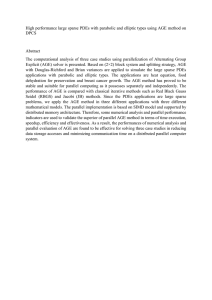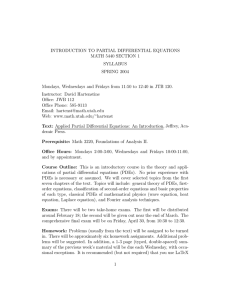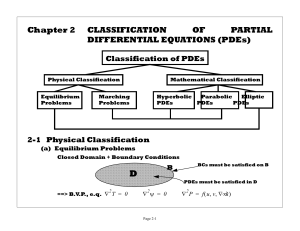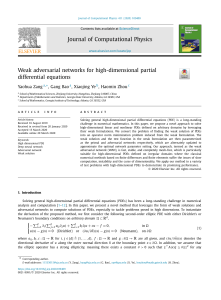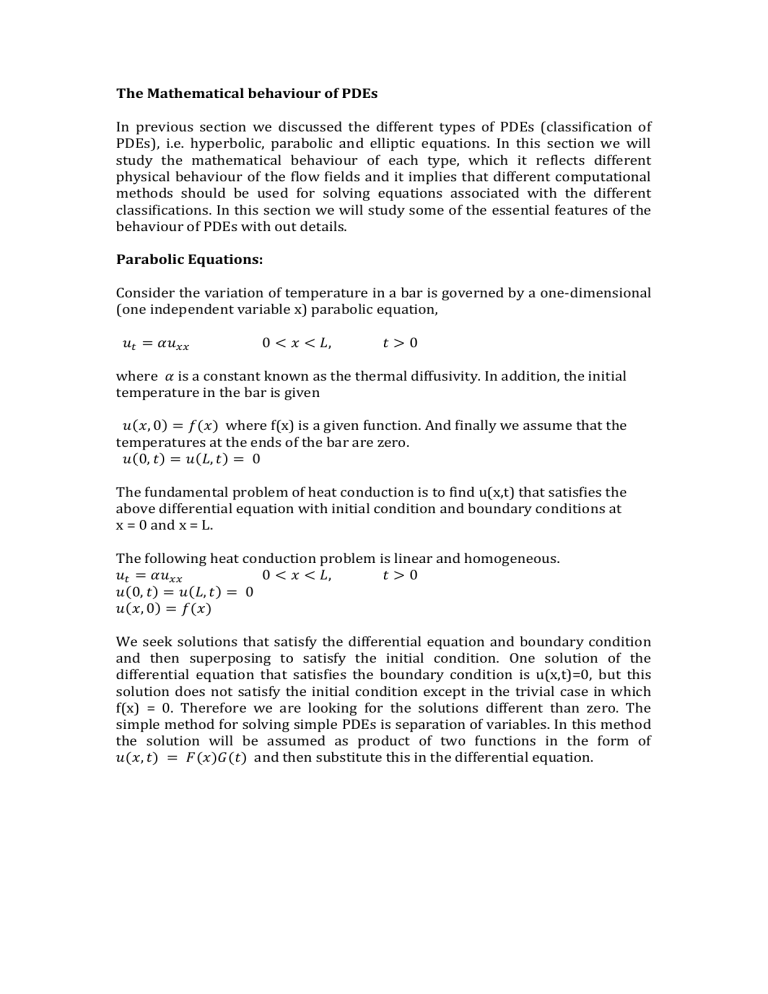
The Mathematical behaviour of PDEs In previous section we discussed the different types of PDEs (classification of PDEs), i.e. hyperbolic, parabolic and elliptic equations. In this section we will study the mathematical behaviour of each type, which it reflects different physical behaviour of the flow fields and it implies that different computational methods should be used for solving equations associated with the different classifications. In this section we will study some of the essential features of the behaviour of PDEs with out details. Parabolic Equations: Consider the variation of temperature in a bar is governed by a one-dimensional (one independent variable x) parabolic equation, 𝑢𝑡 = 𝛼𝑢𝑥𝑥 0 < 𝑥 < 𝐿, 𝑡>0 where 𝛼 is a constant known as the thermal diffusivity. In addition, the initial temperature in the bar is given 𝑢(𝑥, 0) = 𝑓(𝑥) where f(x) is a given function. And finally we assume that the temperatures at the ends of the bar are zero. 𝑢(0, 𝑡) = 𝑢(𝐿, 𝑡) = 0 The fundamental problem of heat conduction is to find u(x,t) that satisfies the above differential equation with initial condition and boundary conditions at x = 0 and x = L. The following heat conduction problem is linear and homogeneous. 𝑢𝑡 = 𝛼𝑢𝑥𝑥 0 < 𝑥 < 𝐿, 𝑡>0 𝑢(0, 𝑡) = 𝑢(𝐿, 𝑡) = 0 𝑢(𝑥, 0) = 𝑓(𝑥) We seek solutions that satisfy the differential equation and boundary condition and then superposing to satisfy the initial condition. One solution of the differential equation that satisfies the boundary condition is u(x,t)=0, but this solution does not satisfy the initial condition except in the trivial case in which f(x) = 0. Therefore we are looking for the solutions different than zero. The simple method for solving simple PDEs is separation of variables. In this method the solution will be assumed as product of two functions in the form of 𝑢(𝑥, 𝑡) = 𝐹(𝑥)𝐺(𝑡) and then substitute this in the differential equation.

